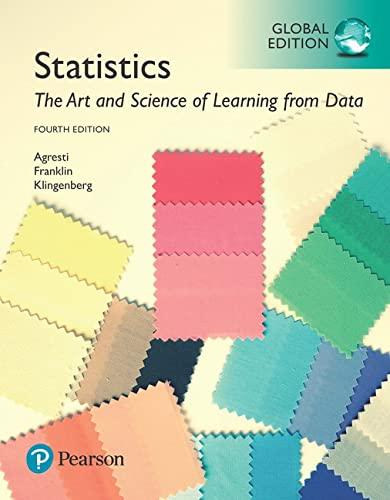10.38 Comparing clinical therapies A clinical psychologist wants to choose between two therapies for treating severe cases...
Question:
10.38 Comparing clinical therapies A clinical psychologist wants to choose between two therapies for treating severe cases of mental depression. She selects six patients who are similar in their depressive symptoms and in their overall quality of health. She randomly selects three of the patients to receive Therapy 1, and the other three receive Therapy 2. She selects small samples for ethical reasons—if her experiment indicates that one therapy is superior, she will use that therapy on all her other depression patients. After one month of treatment, the improvement in each patient is measured by the change in a score for measuring severity of mental depression.
The higher the score, the better. The improvement scores are Therapy 1: 30, 45, 45 Therapy 2: 10, 20, 30 Analyze these data (you can use software if you wish), assuming equal population standard deviations.
a. Show that x1 = 40, x2 = 20, s = 9.35, se = 7.64, df = 4, and a 95% confidence interval comparing the means is 1 -1.2, 41.22.
b. Explain how to interpret what the confidence interval tells you about the therapies. Why do you think that it is so wide?
c. When the sample sizes are very small, it may be worth sacrificing some confidence to achieve more precision.
Show that a 90% confidence interval is (3.7, 36.3). At this confidence level, can you conclude that Therapy 1 is better?
Step by Step Answer:

Statistics The Art And Science Of Learning From Data
ISBN: 9781292164878
4th Global Edition
Authors: Alan Agresti, Christine A. Franklin, Bernhard Klingenberg






